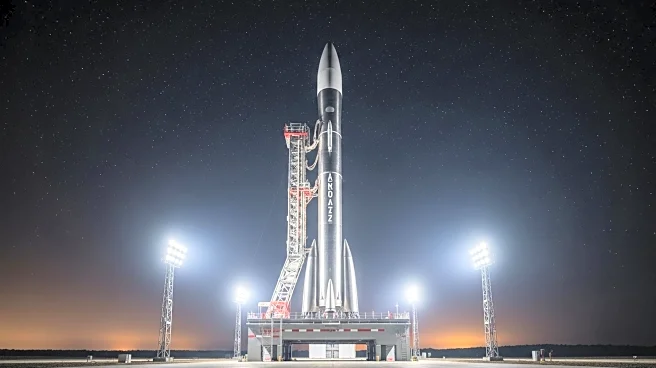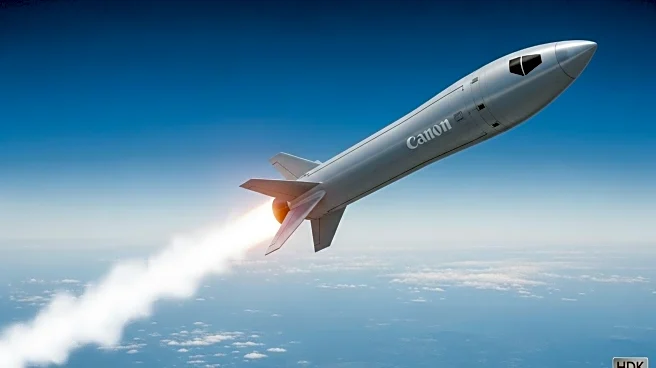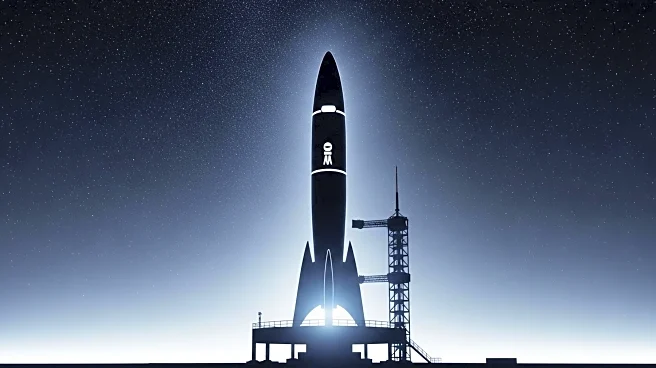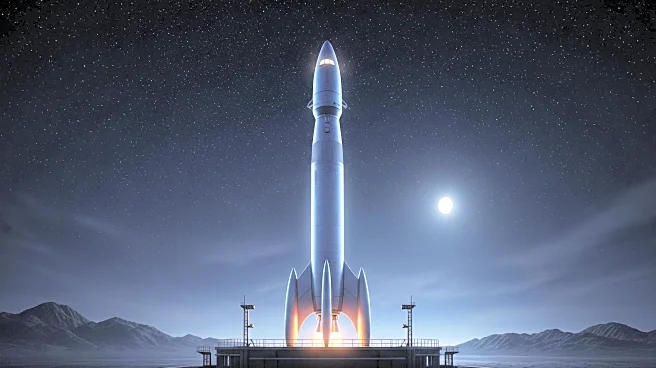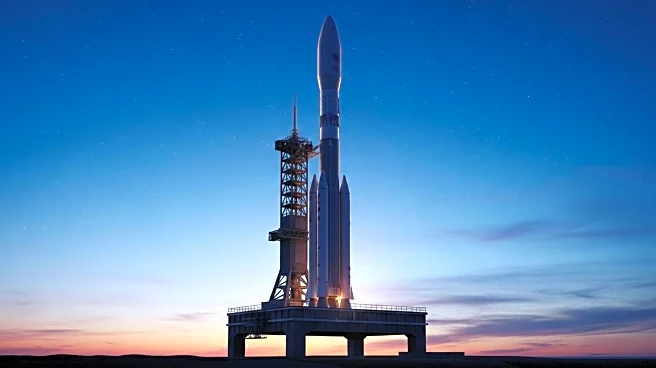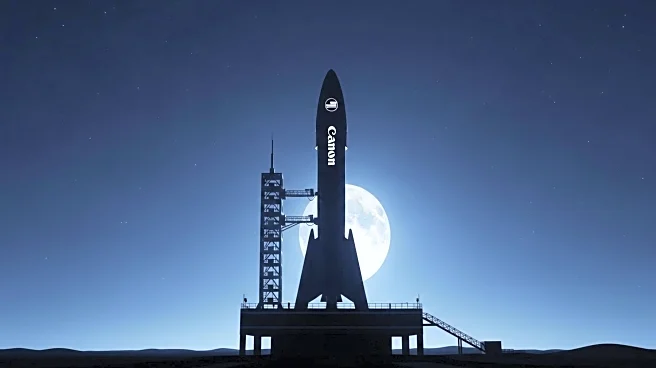What's Happening?
SpaceX has successfully completed its 11th test of the Starship rocket, marking a significant milestone for the company's lunar ambitions. The test involved a controlled splashdown in the Indian Ocean after an hour-long flight, during which the rocket passed all necessary evaluations. This achievement is crucial for NASA's moon plans, which rely heavily on the Starship's capabilities. The rocket, known as Ship 38, performed a dynamic banking maneuver, demonstrating its potential for future landing operations. The test also included the deployment of dummy Starlink satellites, which went smoothly, indicating improvements in the rocket's design. SpaceX's success in this test is a critical step towards fulfilling its $4.2 billion contract with NASA, which requires the Starship to prove its launch-and-return maneuvers are safe.
Why It's Important?
The successful test of SpaceX's Starship is pivotal for the U.S. space program, particularly NASA's delayed moon missions. With competition from China's space program, the reliability of the Starship is essential for maintaining U.S. leadership in space exploration. The test's success boosts confidence in SpaceX's ability to deliver on its contract with NASA, potentially accelerating the timeline for lunar missions. This development also impacts the commercial space industry, as SpaceX plans to offer cargo runs to the moon and Mars, expanding opportunities for private sector involvement in space exploration. The success of the Starship test could influence future investments and partnerships in the space industry.
What's Next?
SpaceX is expected to continue testing and refining the Starship design, with plans to introduce Version 3 of the rocket. The company aims to establish floating fuel depots for NASA's moon missions, a critical component for sustained lunar exploration. As SpaceX progresses, stakeholders such as NASA and potential commercial customers will closely monitor the reliability and safety of the Starship. The success of these tests will determine the feasibility of planned missions to the moon in 2028 and Mars in 2030. Additionally, SpaceX's advancements may prompt competitive responses from other nations, particularly China, which has its own lunar ambitions set for 2030.
Beyond the Headlines
The success of SpaceX's Starship test highlights the growing role of private companies in space exploration, potentially reshaping the dynamics between government agencies and commercial entities. This shift raises questions about the future of space policy and international cooperation, as private companies like SpaceX become key players in achieving national space goals. The ethical implications of commercializing space exploration, including resource allocation and environmental impact, may also come to the forefront as these missions progress.
